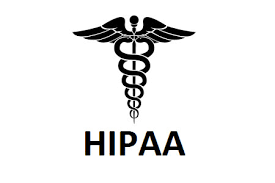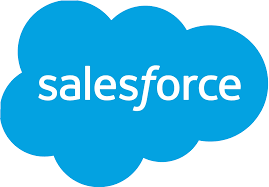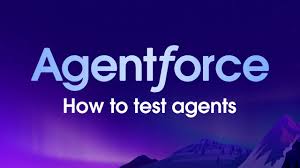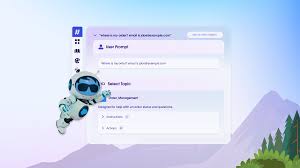Decision Domain Management
Roger’s first week in the office felt like a wilder than 8 second ride on a raging rodeo bull. Armed with top-notch academic achievements, he hoped to breeze through operational routines and impress his new managers. What he didn’t expect was to land in a whirlwind of half-documented processes, half-baked ideas, and near-constant firefighting. While the organization had detailed SOPs for simple, routine tasks—approving invoices, updating customer records, and shipping standard orders—Roger quickly realized that behind the structured facade, there was a deeper level of uncertainty. Every day, he heard colleagues discuss “strategic pivots” or “risky product bets.” There were whispers about AI-based initiatives that promised to automate entire workflows. Yet, when the conversation shifted to major decisions—like selecting the right AI use cases—leaders often seemed to rely more on intuition than any structured methodology. One afternoon, Roger was invited to a cross-functional meeting about the company’s AI roadmap. Expecting an opportunity to showcase his knowledge, he instead found himself in a room filled with brilliant minds pulling in different directions. Some argued that AI should focus on automating repetitive tasks aligned with existing SOPs. Others insisted that AI’s real value lay in predictive modeling—helping forecast new market opportunities. The debate went in circles, with no consensus on where or how to allocate AI resources. After an hour of heated discussion, the group dispersed, each manager still convinced of the merit of their own perspective but no closer to a resolution. That evening, as Roger stood near the coffee machine, he muttered to himself, “We have SOPs for simple tasks, but nothing for big decisions. How do we even begin selecting which AI models or agents to develop first?” His frustration led him to a conversation with a coworker who had been with the company for years. “We’re missing something fundamental here,” Roger said. “We’re rushing to onboard AI agents that can mimic our SOPs—like some large language model trained to follow rote instructions—but that’s not where the real value lies. We don’t even have a framework for weighing one AI initiative against another. Everything feels like guesswork.” His coworker shrugged. “That’s just how it’s always been. The big decisions happen behind closed doors, mostly based on experience and intuition. If you’re waiting for a blueprint, you might be waiting a long time.” That was Roger’s ;ight bulb moment. Despite all his academic training, he realized the organization lacked a structured approach to high-level decision-making. Sure, they had polished SOPs for operational tasks, but when it came to determining which AI initiatives to prioritize, there were no formal criteria, classifications, or scoring mechanisms in place. Frustrated but determined, Roger decided he needed answers. Two days later, he approached a coworker known for their deep understanding of business strategy and technology. After a quick greeting, he outlined his concerns—the disorganized AI roadmap meeting, the disconnect between SOP-driven automation and strategic AI modeling, and his growing suspicion that even senior leaders were making decisions without a clear framework. His coworker listened, then gestured for him to take a seat. “Take a breath,” they said. “You’re not the first to notice this gap. Let me explain what’s really missing.” Why SOPs Aren’t Enough The coworker acknowledged that the organization was strong in SOPs. “We’re great at detailing exactly how to handle repetitive, rules-based tasks—like verifying invoices or updating inventory. In those areas, we can plug in AI agents pretty easily. They follow a well-defined script and execute tasks efficiently. But that’s just the tip of the iceberg.” They leaned forward and continued, “Where we struggle, as you’ve discovered, is in decision-making at deeper levels—strategic decisions like which new product lines to pursue, or tactical decisions like selecting the right vendor partnerships. There’s no documented methodology for these. It’s all in people’s heads.” Roger tilted his head, intrigued. “So how do we fix something as basic but great impact as that?” “That’s where Decision Domain Management comes in,” he explained. In the context of data governance and management, data domains are the high-level blocks that data professionals use to define master data. Simply put, data domains help data teams logically group data that is of interest to their business or stakeholders. “Think of it as the equivalent of SOPs—but for decision-making. Instead of prescribing exact steps for routine tasks, it helps classify decisions, assess their importance, and determine whether AI can support them—and if so, in what capacity.” They broke it down further. The Decision Types “First, we categorize decisions into three broad types: Once we correctly classify a decision, we get a clearer picture of how critical it is and whether it requires an AI agent (good at routine tasks) or an AI model (good at predictive and analytical tasks).” The Cynefin Framework The coworker then introduced the Cynefin Framework, explaining how it helps categorize decision contexts: By combining Decision Types with the Cynefin Framework, organizations can determine exactly where AI projects will be most beneficial. Putting It into Practice Seeing the spark of understanding in Roger’s eyes, the coworker provided some real-world examples: ✅ AI agents are ideal for simple SOP-based tasks like invoice validation or shipping notifications. ✅ AI models can support complicated decisions, like vendor negotiations, by analyzing performance metrics. ✅ Strategic AI modeling can help navigate complex decisions, such as predicting new market trends, but human judgment is still required. “Once we classify decisions,” the coworker continued, “we can score and prioritize AI investments based on impact and feasibility. Instead of throwing AI at random problems, we make informed choices.” The Lightbulb Moment Roger exhaled, visibly relieved. “So the problem isn’t just that we lack a single best AI approach—it’s that we don’t have a shared structure for decision-making in the first place,” he said. “If we build that structure, we’ll know which AI investments matter most, and we won’t keep debating in circles.” The coworker nodded. “Exactly. Decision Domain Management is the missing blueprint. We can’t expect AI to handle what even humans haven’t clearly defined. By categorizing




















